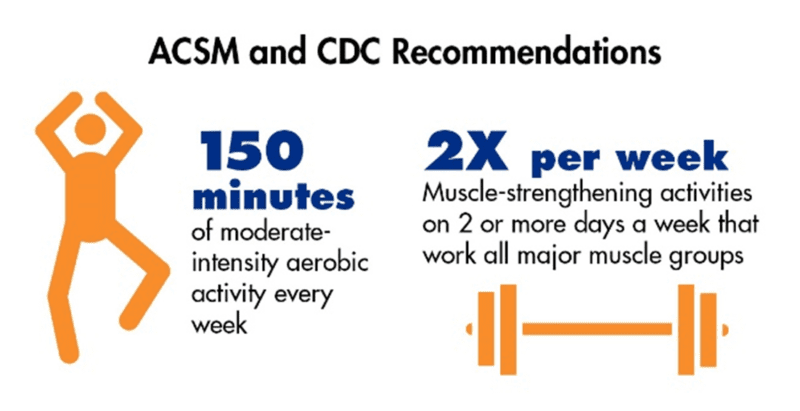Is it Better to Run Longer or More Often? (With Examples)
Runners often ask me if it’s better to run five times a week on shorter distances, such as 3 miles, or if it’s better to run three times a week on longer distances, such as 5 miles.
In this article, I will answer in detail the question of whether it is better to run longer or more often.
Is it better to run longer or more often?
Generally speaking, for beginners and short-distance runners, it is better to run more often shorter distances. On the other hand, for long-distance runners, running longer distances is crucial for increasing the required endurance and mental strength.
Below I will explain in detail why it is good to do short runs, and why it is good to do long runs. Furthermore, I will give you some workout examples.

Why should you do short runs?
Short runs on a regular basis are a great way to distribute the weekly mileage over a number of days.
That way, you will reduce the duration of your workout and the distance you should run each time you’re training, and thus you will be less tired and will need less time to recover.
Example
If your weekly mileage is 25 miles over 5 days a week, you will run an average of 5 miles per workout. Likewise, I would advise you to make one of those 5 workouts quite a bit longer when compared to others, in order to break the monotony in training and to increase your endurance.
Benefits of short runs:
1. They reduce the duration of recovery between workouts
Short runs are less tiring for your muscles, meaning you will need to spend less time on recovery between workouts.
2. They fit in your daily schedule more easily
In comparison to long runs, short runs, as the name says, last much shorter timewise and it is easier to fit them between your daily obligations.
These are usually workouts that last around half an hour, so you can do them at any time of the day.
If you’re a morning type of person, you can even do a short run in the morning before work.
That way, you will start your day full of positive energy because you have already done something useful for yourself.
If you, however, like to sleep longer in the morning, it is easier to fit a half-an-hour short run between your daily obligations than a long run of about 2 hours.
Info
A short run before work will prepare you for the following obligations that day, giving you an opportunity to prepare mentally. However, if you run at the end of the day, that is an opportunity that allows you to forget all the problems that appeared that day and to relax a bit.
3. They improve general health
Short runs perfectly match the physical activity recommendations proposed by the ACSM (American College of Sports Medicine):
- All healthy adults aged 18 to 65 should perform aerobic physical activities of moderate intensity for at least 30 minutes five days a week or aerobic activities of high intensity for at least 20 minutes three days a week.
- Every adult should perform muscle-strengthening activities at least two times a week.

Whether your goal is to improve your health or fitness level (or both), you can easily follow these recommendations with a short daily run.
4. They reduce the risk of heart disease
Short, regular runs can also reduce the risk of developing heart disease and thus prolong your life.
Research conducted on 55137 adults has shown that a short 5-10-minute run every day at a slow pace significantly reduces the risk of death caused by cardiovascular disease by 45%, prolonging life by 3 years.
5. They improve your running technique
With shorter and more intense workouts, it is necessary to focus on proper running techniques.
Your muscles will adjust to the physical effort and will memorize your movements after a large number of repeats.
When running long runs, you will be under greater physical and mental effort, but you will still be able to maintain proper running form due to muscle memory.
That way, you will also reduce the risk of injury.
6. They boost your motivation
If you know that your workout is around half an hour long, you are less likely to be tempted to skip it.
This means that, in the long term, you will stick to your training plan more easily and thus also progress more.
7. They improve the quality of training
It is easier to motivate yourself and focus on training during a short run since you know that the workout will be short.
This will increase the quality of your training without great effort.

8. They increase the speed of your metabolism
Short runs are often performed at a greater intensity than long runs.
Research has shown that exercising at a higher intensity, such as interval training, burns more calories during rest than low-intensity exercises.
The reason for this is that high-intensity exercising increases the speed of your metabolism in the hours after exercising.
9. They strengthen the immune system
Short high-intensity runs strengthen the immune system, while long runs can decrease the body’s ability to fight against infections, such as colds or flu.
10. They reduce indigestion
Many long-distance runners have digestive problems.
Although the exact cause is unknown, experts think that the reason for this is the movement of organs and reduced blood flow in the intestines.
In any case, runners who do short runs usually don’t have any digestive problems.
Examples of short run workouts
Fartlek training
1. Warm-up – 5 minutes of easy jogging
2. The main part of the workout – 20 minutes of running (1 minute of faster running /1 minute of slower running) x 10
3. Cooldown – 5 minutes of easy jogging
Read more: What is Fartlek? (12 Creative Fartlek Training Examples)
Easy running
1. Warm-up – mobility exercises and dynamic stretches
2. The main part of the workout – 30 minutes of easy running + 3 x 60m running strides
3. Cooldown – static stretches
Why should you do long runs?
The focus of lower-intensity long runs is on preparing your body for continuous effort and building muscle endurance.
If you are a long-distance runner, doing long runs is one of the basic types of training for you.
Benefits of long runs:
1. They build endurance
Long runs create denser capillary networks. With more capillaries surrounding the muscles that you use in running, your body can deliver more oxygen to your muscles.
That way, your muscles can work longer and stronger.
Furthermore, long runs also increase the number of mitochondria (their task being to supply muscles with the energy used for contraction) in the body’s cells, thus increasing your endurance.
2. They build mental strength
Long runs are the most specific mental preparation for long races, such as half-marathons and marathons.
It is extremely hard to run a long race without doing long runs because long races require mental preparation along with physical preparation.

3. They increase energy efficiency
When energy from carbohydrate stores is used up, long runs train the body to provide energy from fats.
It is a lot harder to provide muscles with energy from fats, and with long runs, we train the body to perform this process more efficiently.
4. They build muscle
Long runs strengthen the heart, alongside leg muscles and core, but also the entire respiratory system, including the diaphragm.
Read more: Key Muscles Used in Running (8 Main Muscle Groups)
5. They make you faster
Long runs increase your endurance and thus allow you to maintain a certain pace for a longer period of time.
After a certain level of fatigue, slow-twitch muscle fibers get tired. Therefore, the body activates fast-twitch muscle fibers in order to help maintain the pace.
At this point, it is necessary to check your running technique to avoid injuries.
That way, increasing endurance will allow you to run at a faster pace for a longer period of time.
6. They burn more calories
High-intensity short runs will burn more calories per minute, but ultimately running at a slower pace over longer distances will burn more calories.
Naturally, training will take longer, so you will burn more calories in the process.
If your end goal is to burn more calories, long runs are the best way to do that.
Examples of long run workouts
Long run
1. Warm-up – mobility exercises and dynamic stretches
2. The main part of the workout – 90 minutes of easy running
3. Cooldown – static stretches
Intervals
1. Warm-up – easy jogging for 10 minutes, mobility exercises and dynamic stretches, 3x 100m running strides
2. The main part of the workout – 6 x 1000m, 3-minute pause
3. Cooldown – 10 minutes of easy jogging

How should you run for the best results?
For best running results, consistent and varied running is necessary. It is useful for preventing your body from getting used to a certain physical effort. If your body gets used to a certain effort, it is necessary to increase the intensity and length of the run so that you can continue to progress.
In order to progress in running, it is necessary to follow certain guidelines:
1. Set a goal
Once you set your goal, stay focused on what you want to accomplish and achieve, and avoid comparing yourself to others.
From time to time, reconsider your goals so that you can stay on track and remind yourself of what’s important to you.
Achieving your goals will help you grow as a runner provide you with great satisfaction and motivate you to carry on and set new challenges.
Read more: How To Set Running Goals? (Ultimate Guide)
2. Run consistently
Running, like everything else in life, requires dedication, and you will only progress by training consistently.
We all have days when we don’t want to run for one reason or another.
Try to stay persistent in following your training plan, because only a couple of days off can set your goals back up to a couple of weeks.
3. Focus on gradually increasing the distance
Beginners should do aerobic endurance training for the first 4-6 weeks, focusing on gradually increasing distance weekly.
Experienced runners can develop aerobic endurance, flexibility, mobility, and strength through various workouts.
4. Don’t overdo it
Don’t let a well-done workout push you to significantly increase distance or speed, as by doing so you only risk injury.
Stick to your training plan and keep in mind that some workouts serve as an active recovery before important workouts.
5. Listen to your body
The only valid reason to skip training is an injury or illness. Don’t run injured.
If you feel muscle pain halfway into your workout, stop. It is better to skip one workout preventively than two weeks of training due to an injury.
6. Keep a training log
Record a completed workout in your training log. Describe how you’ve felt before, during, and after training.
Make a note of which workouts were easy and which were too hard for you.
Writing a training log will help you determine your strengths and weaknesses and will allow you to create an efficient training plan tailored solely to you.
You can buy my Digital Running Log here.

How often should you run for optimal benefits?
For best results, you should run at least three times a week. On rest days, you should still be active, ride a bike, or swim. Likewise, it is extremely important not to run injured.
In any case, how often you run will depend on your goals, conditions, and experience.
If you are not running enough, you will never reach your full potential. On the other hand, if you run too much, there is a high chance of injury.
Some runners prefer running daily, while others prefer running three times a week.
Likewise, many runners are equally comfortable with one and the other training schedule.
To be able to determine your ideal running schedule, ask yourselves the following questions:
- What is your current weekly mileage?
- How long have you been training?
- How many times a week are you able to train?
- What are your goals?
- What distances do you want to run?
- Did you have any problems with injuries?
Example
If you run 36 miles a week, you will probably be better off running five times a week at different distances than running 12 miles three times a week. If you are not used to running 12 miles in one workout, there is a great chance of injury. Your muscles, tendons, ligaments, and joints simply won’t be able to perform their tasks properly and recover before the next workout.

Matea Matošević
Hi, I’m Matea! I’m an Olympic Marathon Runner, founder, and writer behind OLYRUN.com. On this site, I provide help in the form of my knowledge and experience to all who love running and active living. Read more…

